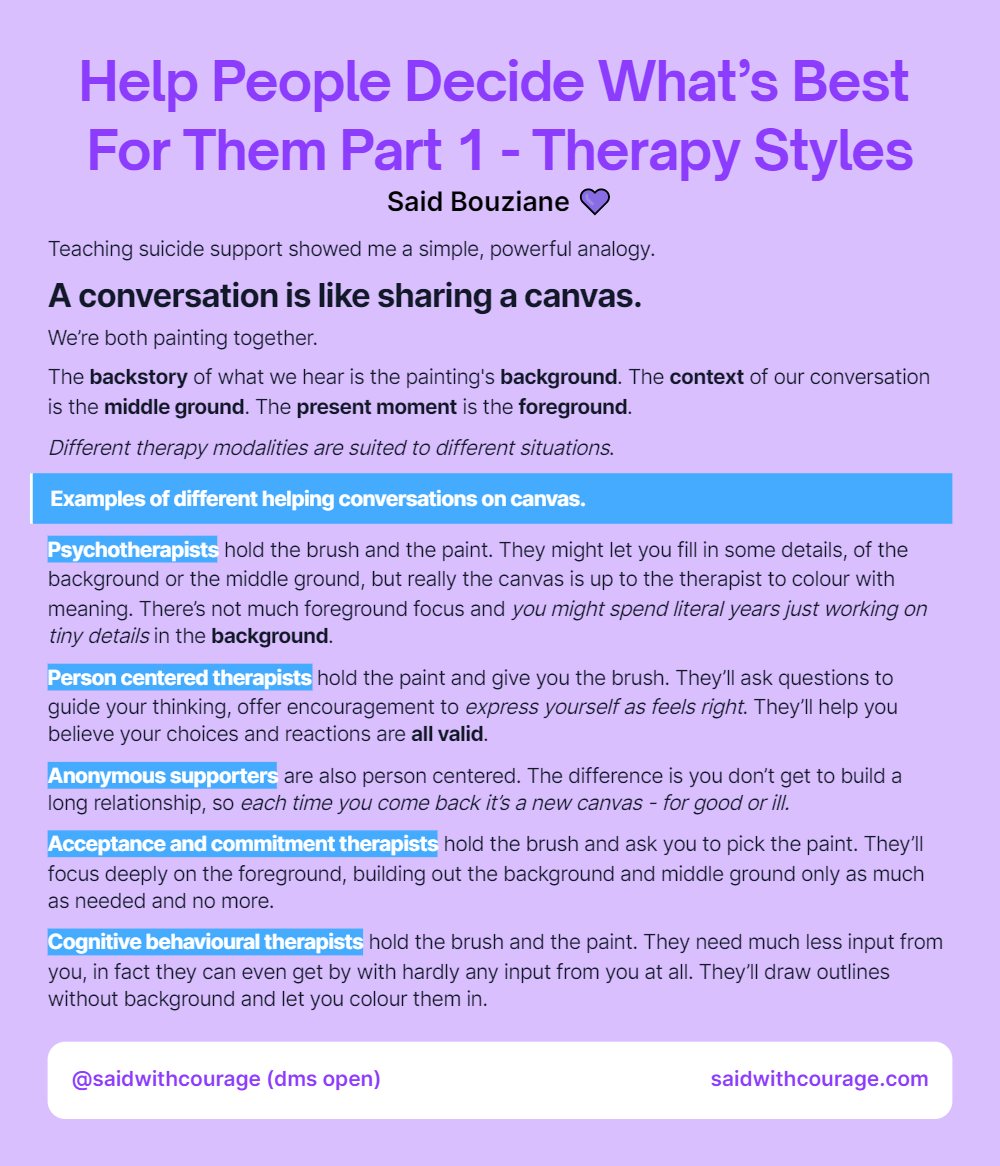Teaching suicide support showed me a simple, powerful analogy.
A conversation is like sharing a canvas.
We’re both painting together.
The backstory of what we hear is the painting’s background. The context of our conversation is the middle ground. The present moment is the foreground.
Different therapy modalities are suited to different situations.
Examples of different helping conversations on canvas.
Psychotherapists hold the brush and the paint. They might let you fill in some details, of the background or the middle ground, but really the canvas is up to the therapist colour with meaning. There’s not much foreground focus and you might spend literal years just working on tiny details in the background.
Person centered therapists hold the paint and give you the brush. They’ll ask questions to guide your thinking, offer encouragement to express yourself as feels right. They’ll help you believe your choices and reactions are all valid.
Anonymous supporters are also person centered. The difference is you don’t get to build a long relationship, so each time you come back it’s a new canvas – for good or ill.
Acceptance and commitment therapists hold the brush and ask you to pick the paint. They’ll focus deeply on the foreground, building out the background and middle ground only as much as needed and no more.
Cognitive behavioural therapists hold the brush and the paint. They need much less input from you, in fact they can even get by with hardly any input from you at all. They’ll draw outlines without background and let you colour them in.

